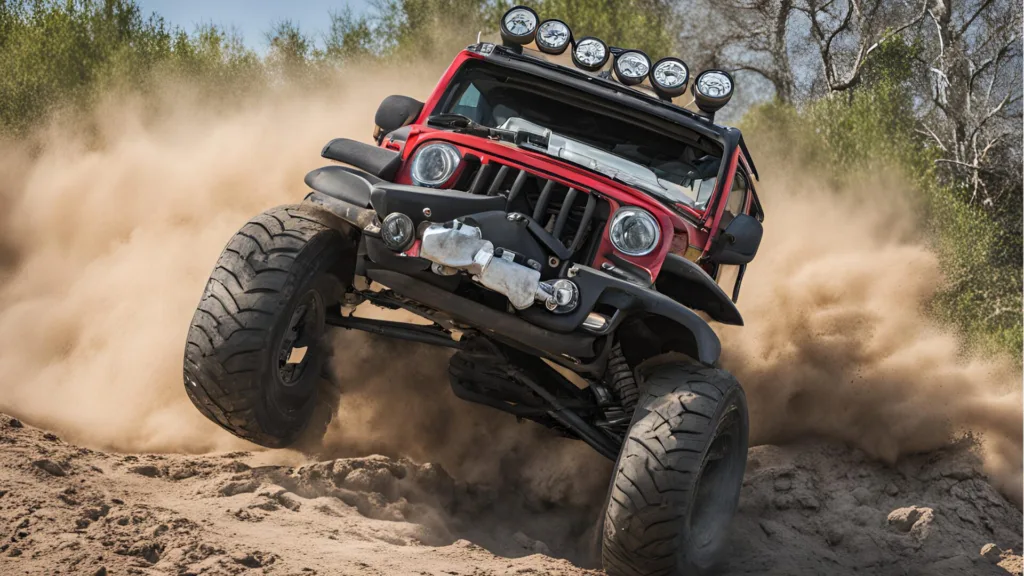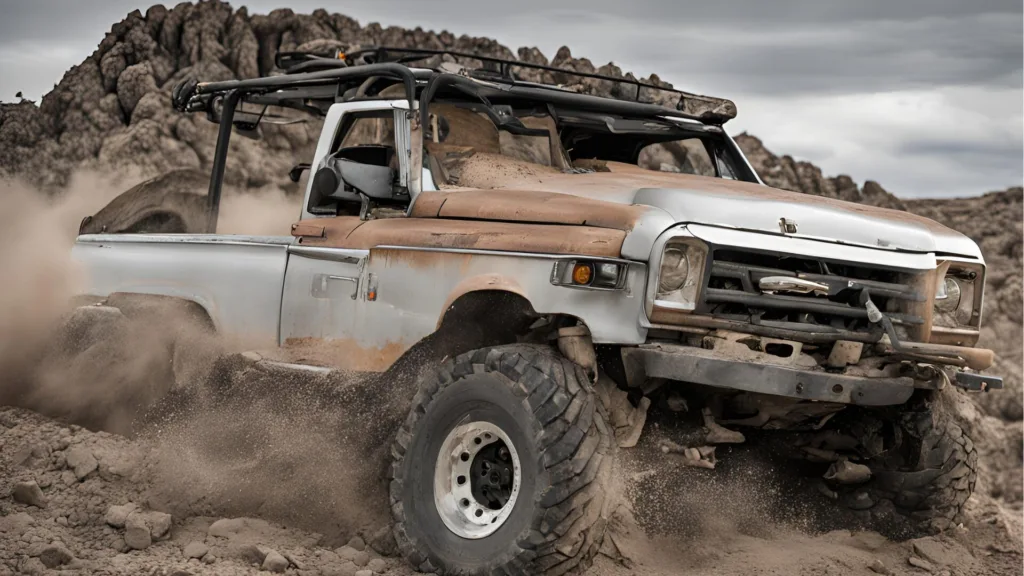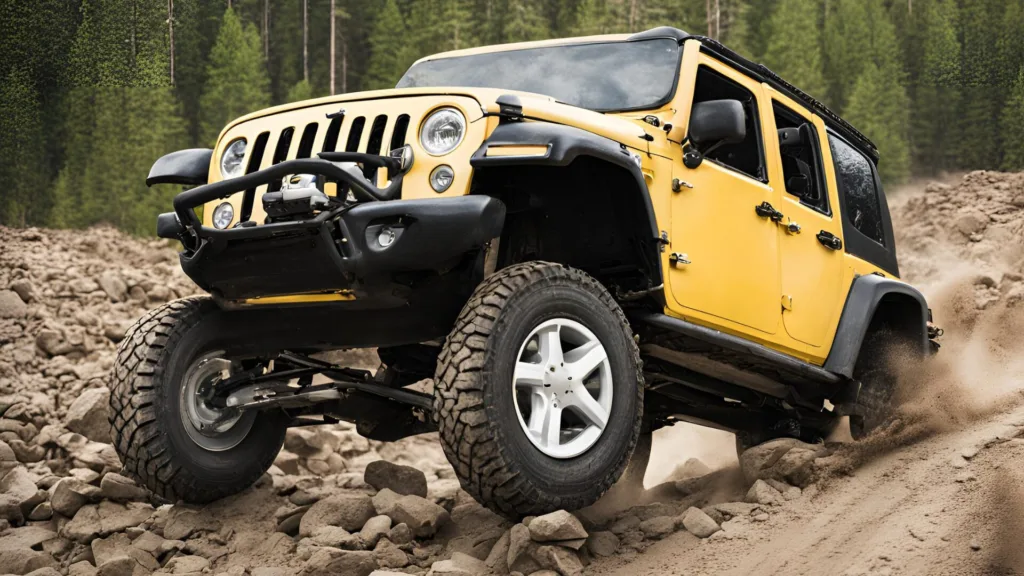Ensure off-road tire safety by regularly checking tire pressure and inspecting for damage before outings. Only use tires suited for the terrain you plan to navigate.
Setting off on an off-road adventure requires more than just a robust vehicle; it demands the right tires, optimized for challenging terrains. Tire safety plays a pivotal role in the performance and reliability of your ride. Every off-roader should prioritize a pre-trip tire inspection to avoid unexpected pitfalls in remote areas.
Select tires rated for your specific activities, whether that’s rock crawling, mud-bogging, or desert racing to ensure a grip that matches the grit of your journey. A good set of tires can mean the difference between an exhilarating day on the trails and being stuck miles from help. Keep your adventures safe and exhilarating by paying due diligence to the very components that keep you grounded – your off-road tires.

Traits Of High-quality Off-road Tires
Adventurers and thrill-seekers know that the right set of off-road tires is crucial for conquering tough terrain. But not all tires are equal. High-quality off-road tires possess specific traits that distinguish them. These traits ensure safety, reliability, and performance when driving through rough, unpredictable landscapes. Let’s dive into what makes off-road tires stand out among the rest.
Materials And Construction
The materials used in producing off-road tires impact their overall strength and performance. Advanced rubber compounds offer flexibility and resilience in extreme temperatures. Strong sidewalls resist punctures and tears from sharp rocks. Quality off-road tires include:
- Reinforced Sidewalls: Extra layers prevent sidewall damage.
- Advanced Rubber: Allows for adaptability in various climates.
- Steel Belts: Enhance stability and support.
Tread Patterns And Durability
The design of tread patterns influences traction, control, and tire longevity. Deep, aggressive treads excel in muddy, loose conditions while tighter patterns suit rocky surfaces. Quality off-road tires feature:
- Deep Treads: Improve mud and snow performance.
- Multi-Terrain Capability: Versatile use across environments.
- Chip and Tear Resistant: Tread stays intact on rough terrain.
Tire durability ensures long-lasting adventures without frequent replacements. The combination of materials and tread design greatly affects how well the tire withstands the demands of off-road driving.
Proper Tire Sizing And Vehicle Compatibility
Ensuring proper tire sizing and vehicle compatibility is crucial for off-road adventures. The right tire size enhances performance and safety. This guide focuses on matching off-road tires to your vehicle’s specific needs.
Measuring For The Right Fit
Accurate measuring prevents mishaps. To measure for the right fit, follow these steps:
- Check the owner’s manual for size recommendations
- Use a tire size calculator for precision
- Confirm clearance in the wheel well
- Ensure tires don’t rub on suspension components
Remember, oversized tires may require modifications to avoid interference with the vehicle’s body or suspension.
Considerations For Vehicle Type
Different vehicles have unique tire requirements:
| Vehicle Type | Tire Size Impact |
|---|---|
| Trucks/SUVs | Larger, wider tires for stability |
| Jeeps | Aggressive tread for traction |
| ATVs | Lightweight tires for maneuverability |
Match tires to your vehicle’s role. Consult with a specialist to confirm your choice fits the vehicle’s make and model.
Essential Maintenance For Off-road Tires
Thrilling off-road adventures demand resilient tires. Your safety relies on the condition of your tires. Proper care extends tire life and ensures peak performance. Below are key maintenance practices vital for your off-road tires.
Regular Inspections
Regular inspections catch issues before they escalate. Examine your tires for cuts, punctures, or bulges. Check the tread depth regularly. Shallow treads compromise grip and safety. Use a tread depth gauge for precise measurements.
Air Pressure Checks
Correct air pressure is crucial. It affects off-road handling and tire longevity. Use a reliable gauge to check pressure when tires are cool. Adjust to manufacturer’s specifications, factoring in the terrain you’ll tackle.
Tire Rotations And Balancing
Tire rotations promote even wear. Rotate them every 5,000 to 8,000 miles. Balancing your tires reduces vibrations and prevents premature wear. Perform balancing whenever you install new tires or notice a vibration during driving.
| Maintenance Task | Interval | Why It’s Important |
|---|---|---|
| Inspections | Before/After trips | Prevents tire failure |
| Air Pressure Checks | Monthly | Ensures optimal performance |
| Rotations and Balancing | Every 5,000 – 8,000 miles | Achieves even tire wear |

Recognizing Wear And Damage
Venturing off the beaten path with your vehicle can be thrilling. Yet, it’s vital to ensure your off-road tires remain in top condition. Recognizing wear and damage on your off-road tires is the first step toward a safe and uninterrupted journey. Let’s dive into the signs that dictate the health of your tires and understand when it’s time for a replacement.
Identifying Tire Wear Patterns
Consistent checks on your tires reveal a lot about their condition. Uneven wear patterns often indicate issues with alignment, suspension, or air pressure. Take note of the following wear patterns:
- Center Wear: Tires might be over-inflated.
- Edge Wear: Tires could be under-inflated.
- One-Side Wear: Potential suspension or alignment problems.
- Cupping or Scalloping: Possibly worn shocks or imbalanced tires.
- Irregular Bald Spots: Could be a sign of worn suspension components.
When To Replace Off-road Tires
Tire replacement is critical for safety. Look for these clear indicators to know when to replace your off-road tires:
- Tread Depth: Treads less than 1/16 of an inch (
1.6mm) mean it’s time for a new set. - Signs of Damage: Cuts, cracks, or bulges on sidewalls are hazards.
- Age: Beyond five years, tires degrade naturally.
- Puncture and Repair Frequency: Frequent repairs suggest tire weakness.
Safe Driving Practices On Rough Terrain
Adventurous trails summon you! But, remember, mastering off-road tire safety is key. Commanding your vehicle over uneven ground requires finesse and knowledge. Here’s how to keep control and stay safe on the wildest terrains.
Navigating Obstacles
Off-road trails abound with challenges. Fallen logs, rocks, or sudden dips can surprise you. Approach each obstacle with caution.
- Scan ahead: Eyes on the terrain; anticipate changes.
- Angle your approach: Tackle obstacles at an angle. One tire at a time!
- Avoid sharp turns: Keep movements smooth to prevent tire damage.
Speed And Control
Maintaining a steady pace is crucial. Not too fast; not too slow.
| Terrain Type | Recommended Speed |
|---|---|
| Mud | Moderate |
| Sand | Low to Moderate |
| Rocks | Low |
Use low gear to maximize control. Avoid abrupt acceleration or brakes. These actions can lead to skidding or flipping. Stay focused. Be patient.
Recovery Techniques
Even with the best practices, you might get stuck. But don’t worry! Equip your ride with recovery gear.
- Carry traction mats, a shovel, and a winch.
- If you’re stuck, don’t spin your tires. It can dig you in deeper.
- Deploy traction mats beneath your tires for grip.
- If needed, winch your vehicle out. But always in a straight line.

Preparation For Off-road Adventures
Off-road travel calls for readiness beyond the usual road trip. Tire safety plays a pivotal role in ensuring a smooth and enjoyable off-road experience. It’s crucial to prepare your vehicle for the rugged terrain ahead. Reliable tires, equipped for diverse landscapes, become your best allies. Let’s explore some key steps to prep your tires for the journey.
Emergency Repair Kits
No one wants a flat tire, especially off the beaten path. An emergency repair kit is essential. Here’s what it should include:
- Tire plugs for quick fixes
- Air compressors to re-inflate tires
- Extra valve stems and core remover tools
- Patches for larger punctures
- A sturdy jack and lug wrench compatible with your vehicle
Using Beadlock Wheels
Beadlock wheels secure tire beads under low pressure. This prevents the tire from slipping off the rim. For serious off-roading, they are a smart investment.
Here’s why:
| Beadlock Wheels Benefit | Description |
|---|---|
| Enhanced Grip | Greater traction on challenging surfaces |
| Safety | Reduces the risk of tire bead slippage |
| Performance | Stabilizes the vehicle during sharp turns and steep climbs |
Tire Deflation And Inflation
Adjusting tire pressure is key for off-road conditions. Lower pressure increases traction but requires careful balance. Use a quality tire gauge and remember to inflate back to safe levels before hitting the highway.
Proper techniques ensure:
- Better traction on soft terrain
- A comfortable ride over bumpy ground
- Protection against tire damage and wear
By following these tips, off-roaders can tackle any terrain with confidence. Safety first ensures that the adventure never ends on a flat note.
Frequently Asked Questions On Off-road Tire Safety
How Do I Choose Off-road Tires?
Off-road tire selection depends on the terrain type and vehicle usage. Seek tires with strong sidewalls and deep treads for rocky or muddy conditions. Consider tire size and ply rating to better match your off-road adventures.
What Tire Pressure Is Best For Off-roading?
Optimal tire pressure for off-roading varies with terrain. Lower pressure increases traction on soft surfaces. Always check the manufacturer’s recommendations to avoid under or over-inflation and to ensure safety and tire integrity during off-road conditions.
Can Regular Tires Be Used For Off-roading?
Regular tires are not ideal for off-roading. They lack the required tread depth and structural strength, potentially leading to poor traction and increased damage risk. Purpose-built off-road tires are recommended for rugged terrain to ensure durability and stability.
How To Maintain Off-road Tires?
Maintain off-road tires by conducting regular inspections for cuts, abrasions, and punctures. Clean out trapped debris. Check and adjust the pressure accordingly after each off-road trip. Rotate and balance them as per the manufacturer’s schedule to ensure even wear.
Conclusion
Venturing off the beaten path demands respect for your equipment. Ensure regular tire maintenance and choose the right set for your adventures. Prioritize safety to enjoy the rugged trails. Embrace the terrain with confidence, knowing your off-road tire safety is up to the task.
Keep exploring, and drive with peace of mind.


